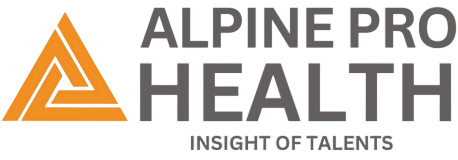In the evolving world of value-based healthcare, quality reporting has become a crucial component of provider reimbursement. One such program, the Physician Quality Reporting System (PQRS), introduced by the Centers for Medicare & Medicaid Services (CMS), was designed to improve the quality of care by rewarding accurate reporting of performance data. However, inadequate documentation or incorrect coding in PQRS can result in significant penalties.
Even though PQRS officially ended in 2016, its core principles and impact live on through the Merit-Based Incentive Payment System (MIPS). Thus, the lessons from PQRS remain relevant, particularly in accurate coding and documentation practices to avoid penalties and optimize reimbursement.
This section explores how to avoid PQRS-related penalties through precise documentation, accurate coding, and robust internal processes while also highlighting how Alpine Pro Health supports clients in staying compliant and penalty-free.
What Was PQRS & Why It Still Matters?
The Physician Quality Reporting System was a CMS initiative encouraging eligible professionals (EPs) to report information on the quality of care to Medicare. Initially a voluntary program, it eventually included payment penalties for non-compliance.
Although PQRS was replaced by MIPS under the Quality Payment Program (QPP), the structure of performance reporting, coding expectations, and compliance principles remain largely unchanged. Errors in reporting can still lead to adjusted Medicare payments, missed incentives, or audits.
Therefore, understanding the PQRS era best practices remains valuable for today’s medical coding Service Team and billing teams.
Common Causes of PQRS Penalties & How to Prevent Them?
1. Inaccurate or Incomplete Coding
PQRS and now MIPS rely on CPT, HCPCS, and ICD-10 codes to track performance. Inaccurate coding can misrepresent services provided, failing to meet the measure’s requirements.
Best Practice:
Ensure coding staff stay updated with annual changes to code sets. Use automated coding tools and perform routine audits to maintain compliance.
2. Insufficient Clinical Documentation
Coding depends on what is documented. If a provider performs a service but fails to document it properly, it cannot be coded and therefore, cannot be reported.
Best Practice:
Train physicians on documentation best practices that meet measure-specific criteria. Encourage clarity, specificity, and timely entries in the EMR system.
3. Late or Missed Submissions
Failing to submit data within CMS deadlines results in automatic penalties, regardless of care quality.
Best Practice:
Implement a reporting calendar and assign a compliance coordinator to oversee timely submissions. Consider using certified registries that offer submission support.
4. Not Understanding Measure Requirements
Each PQRS or MIPS measure has specific criteria for denominator eligibility, performance, and exclusions. Many providers unknowingly misreport due to misunderstanding these nuances.
Best Practice:
Study each measure specification carefully. Make use of CMS-provided Measure Specification Manuals and keep compliance staff well-trained on requirements.
5. Lack of Cross-Department Communication
If clinicians, coders, and billing teams are not aligned, it can lead to fragmented or incorrect data being submitted.
Best Practice:
Foster a collaborative environment where all departments meet regularly to discuss coding updates, measure interpretations, and audit findings.
Best Practices for Accurate Coding and Documentation
To avoid MIPS-related penalties (previously under PQRS), the following coding and documentation strategies are essential:
A. Align Documentation with Coding
Ensure that physician notes clearly justify every CPT or ICD-10 code used. Vagueness or non-specific language can jeopardize compliance and reduce coding accuracy.
B. Use Technology to Improve Accuracy
Implement Computer-Assisted Coding (CAC) and Natural Language Processing (NLP) tools that flag inconsistencies, missing documentation, or incorrect modifiers.
C. Perform Regular Internal Audits
Conduct quarterly coding audits to review random samples of medical records and validate code usage. Identify patterns of undercoding, overcoding, or modifier misuse.
D. Maintain Staff Education
Offer ongoing training sessions for coders and providers to keep up with CMS policy updates, coding changes, and measure requirements.
E. Partner with a Coding Expert
Engaging with a third-party coding and RCM service like Alpine Pro Health can bring in expertise, technology, and accountability to ensure compliance and accuracy.
How Alpine Pro Health Helps You Avoid PQRS/MIPS Penalties?
At Alpine Pro Health, we understand that one error in coding or documentation can lead to major financial setbacks. Our team of AAPC and AHIMA-certified coders are trained to align clinical data with regulatory requirements to ensure precise coding, robust documentation, and fully compliant reporting.
Here’s how we support our clients:
- ✅ Pre-Audit and Post-Audit Reviews: We review records for coding accuracy and documentation completeness to eliminate gaps before submissions.
- ✅ Specialized Quality Reporting Support: Our teams interpret and implement complex CMS reporting measures for both current MIPS and legacy physician quality reporting system frameworks.
- ✅ Real-Time Coding Feedback: We work directly with physicians and care teams to provide instant feedback on documentation gaps.
- ✅ Risk Adjustment and HCC Coding: Our coders are proficient in HCC methodologies, crucial for accurate RAF scoring in MIPS performance.
As a result, clients who work with Alpine Pro Health experience fewer denials, higher reimbursement rates, and virtually no penalties from reporting programs.
Transitioning from PQRS to MIPS: What You Need to Know?
Though PQRS has been phased out, its influence continues in the MIPS Quality Category. Here’s how to stay aligned:
| PQRS Element | MIPS Equivalent | Notes |
| Quality Measures | Quality Performance Category | Accounts for 30% of MIPS score |
| Reporting Mechanisms | Claims, Registries, EHR | Similar submission formats |
| Penalty for Non-Reporting | Negative Payment Adjustment | Can reach up to -9% |
Providers who previously participated in PQRS will find the MIPS structure familiar but more integrated with other performance areas such as cost and improvement activities.
Final Thoughts
Even though PQRS has officially ended, the foundation it laid continues to influence today’s value-based reimbursement programs. Accurate coding and meticulous documentation remain essential not only for maximizing revenue but also for delivering measurable quality care.
By following best practices, leveraging technology, and partnering with experienced firms like Alpine Pro Health, providers can ensure they remain penalty-free while excelling in compliance, performance, and patient outcomes.


